Students battle stress, fatigue, apathy as they adjust to virtual classes
While students say they miss social interaction, collaboration, they are also enjoying the comfort, independence, flexibility of online learning
The online school year has started, and it is a stark change from the normal, in-person school. Compared to the relatively relaxed online courses of the spring semester, online leanring in the fall has meant to provide the same rigor and assessment of in-person classes in an attempt to salvage the year. This attempt to replicated the expectations of regular classes in a virtual environment has proved to be difficult for many students.
One problem that has arisen in online classrooms is the amount of work assigned to students. Not only do students feel overwhelmed, but after a long day of Zoom sessions, students say it’s hard to feel motivated to do the assigned work.
“I feel like that’s kind of a general thing for online school,” freshman Lanie Sepehri said. “I’m not motivated to do things because it doesn’t feel like there’s any real pressure or deadlines necessarily.”
Differentiating between classwork and homework has become increasingly difficult as well.
The amount of time spent on screens has also become an issue. Though it is understandable and expected to be online throughout the day, it is exhausting for the eyes, mind, and body to be sitting at a computer screen for hours on end. Not only are students on screens, but they are also in their homes, which causes some to lose concentration.
“It’s kind of hard to stay focused, especially with all the distractions in my room,” Sepehri said.
The dwindling attention spans of students throughout the class periods makes work more difficult to complete.
“I’m having to work a lot harder to stay focused,” freshman Maggie Coulbourn said. “Even though I’m no longer hanging out with friends all day long that might distract me from my work, I have a lot of things that could distract me.”
Another concern of the student body is the lack of a social life. Students not only miss interacting with classmates face to face but also the ability to connect with their teachers and other faculty members.
“I’m a pretty social and outgoing person and with online classes, there’s really no social aspect to it,” Sepehri said. “I do know some people, but I obviously don’t really know many people at my school, and I don’t have classes with a lot of the people I do know, so it’s been really hard to stay social and stay engaged because it’s hard to make connections and meet new people when you’re online.”
Students miss the classroom bustle and the collaborations and interactions with each other. Lunches are another big change. The time that used to be spent chatting with friends is now spent alone. There is also a larger divide between teachers and students. The Zoom setting doesn’t allow for the relationships that in person schooling provides almost seamlessly.
“One of the things I am most worried about is if I need help during a class,” freshman Otto Strub said. “I can’t ask the teacher for help without taking time out of the class day.”
According to Coulbourn, it is difficult to communicate to teachers in a class full of black screens and unfamiliar faces.
“It was a lot easier [in the regular classroom] to ask questions of your teacher … because you just raise your hand, they come over, you tell them your question, they explain it and they leave, but now you know, it’s in Zoom, so you either have to interrupt them or put something in the chat which sometimes they don’t see, and it’s also a lot less private to ask your question.”
Additionally, fine arts classes have been greatly affected by the switch to online. There is no longer the community that so many artists love. Music students have Zooms with their mics off, playing in a room while isolated at home.
“Normally, the most important and exciting part of my day was orchestra,” freshman Ingrid Smith said. “As a violin player in the Fine Arts Academy, it’s very important that I get to play music with people. But by doing school online, I don’t really get that opportunity. This is really hard for me because playing music by myself in my bedroom is not the same as playing in orchestra.”
There are no rehearsals for theatre and choir students, nor is there any space for dancers to connect. It’s difficult at a fine arts school to not be able to focus and enjoy the craft that you choose/chose to commit to.
Though online learning does have its shortcomings, it also comes with a few benefits. Not only are students now able to sleep in, but the commute to and from school has been eliminated almost completely.
“I used to be so stressed about getting to school and waking up early, but now it’s all in front of me,” senior Ari Miller-Fortman. “We can do our schoolwork from here, do our homework from here; we don’t have to worry as much about time management, so I think that’s pretty cool.”
Some students also enjoy the independence that this situation allows for, as well as the ability to have all the assignments together digitally.
This school year is shaping up to be an interesting one. There are many unknowns of what the future holds, but for now, online learning seems to be here to stay. The vastly different opinions and experiences towards and with this new system are just an example(s) of the unique and contrasting ways in which students learn.
BONUS PHOTO COVERAGE: We asked journalism students in photojournalism and yearbook to documents their online learning experience and they came through for us providing a visual and verbal chronicle of what the first month of virtual McCallum has been like for the student body.
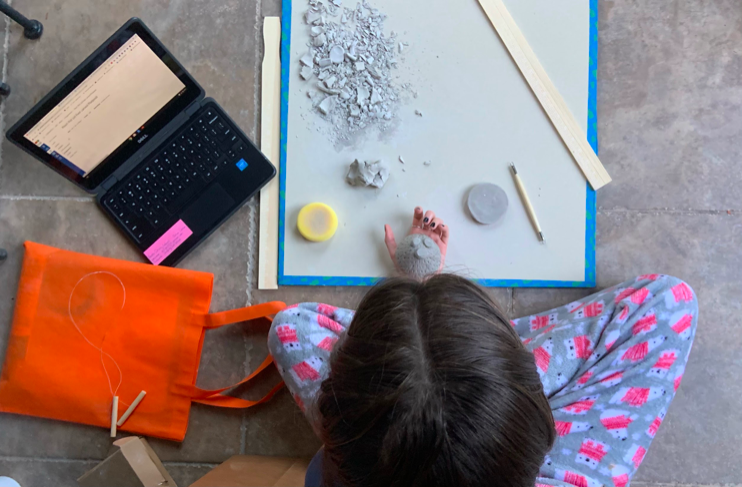
Sophomore Camille Wilson does her ceramics project. Ceramics is definitely one of those classes that having to be at home has impacted. Instead of working with clay in the classroom, students all picked up clay at the beginning of the year to do their projects from home. “I love the idea of ceramics and have a lot of fun creating different pieces, but I think it would all be a lot more successful if we were able to work in school,” Wilson said. Photo by Olivia Escalante.
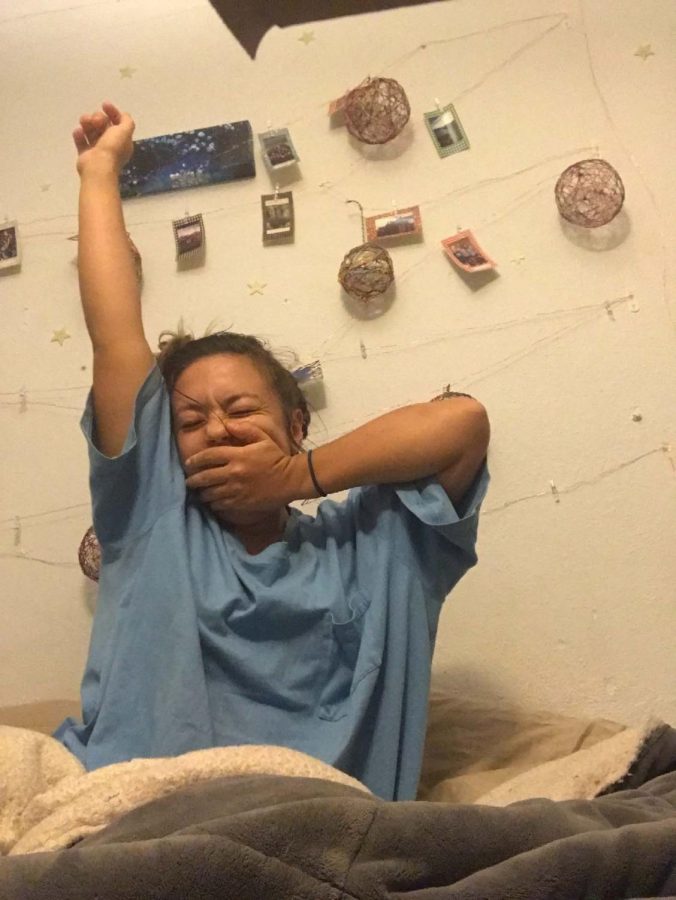
WAKE UP TO SIT DOWN: Since school is online students don’t have to wake up till about five minutes before their classes start; junior Lily Dashner is waking up at 8:55 on Tuesday morning. “To be honest it’s nice to not have to wake up an hour and a half before school starts. I can just hop out of bed and get on the computer.”
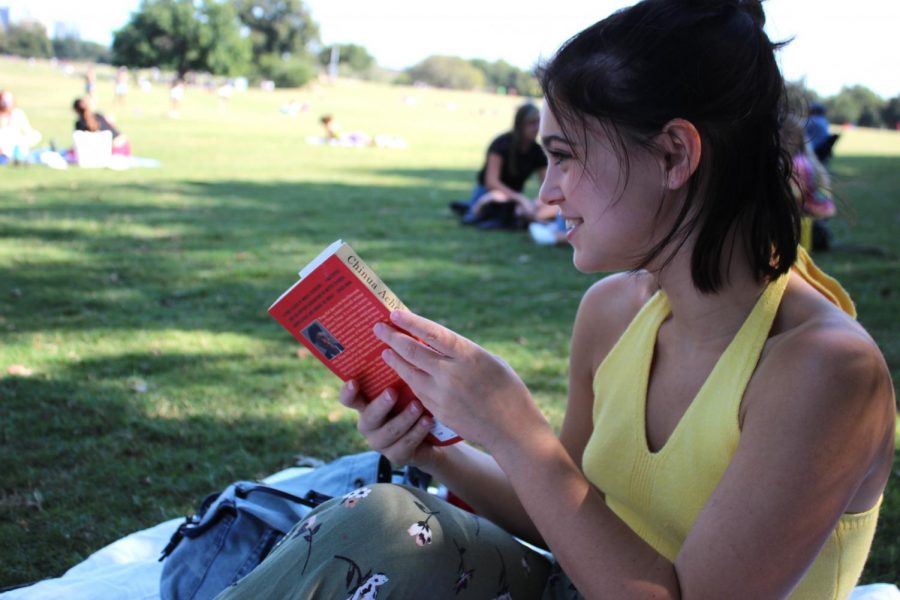
BOOKS ON A BLANKET: Sophomore Maggie Provost sits down to read at Zilker Park. “I think I could probably read anywhere because I like to read with background noise,” Provost said. With the uncertain safety of sitting anywhere public indoors, finding an outdoor place to read like a park has been a common activity for students. Provost is reading the English 2 book, Things Fall Apart by Chinua Achebe. The assignments for this book are made of individual chapter responses, where students answer three questions from a list of options. “I like the approach the English teachers took this year,” Provost said. “It works well virtually, and I’ve gotten to questions that really make me think about the book!” Photo by Lissa Castro.
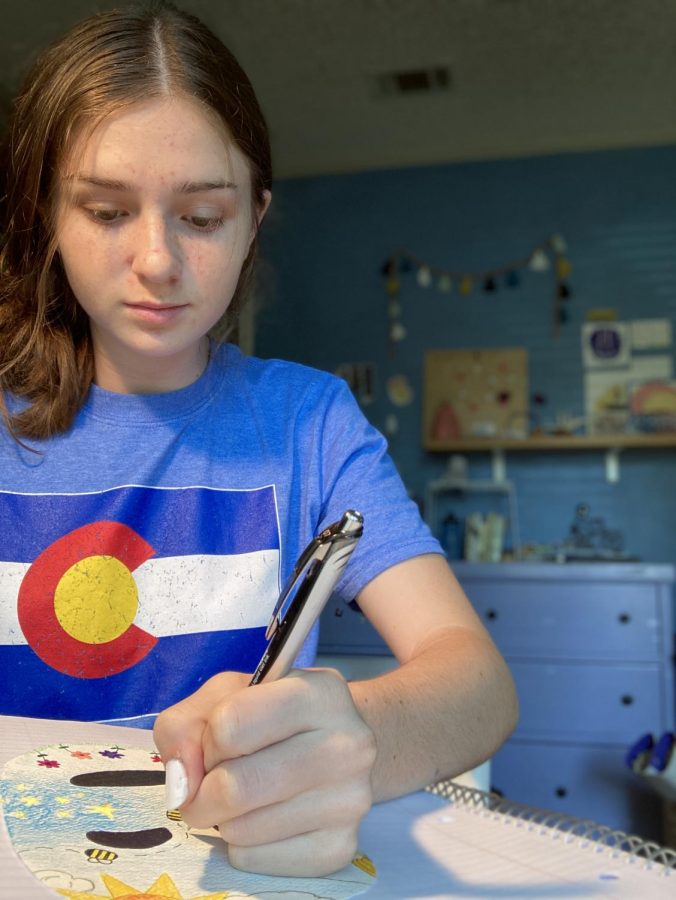
MASK MADNESS: With the pandemic still in play, sophomore Julia Husted works on her first English project of the year. The assignment was to create a mask that represents what people see you as and what you see yourself as. “I really enjoyed this assignment because it forced me to look deeper into my mind and discover new things about myself,” Husted said. “I also found it interesting because with the virus going around, a mask project seemed pretty ironic.” Self portrait by Husted.
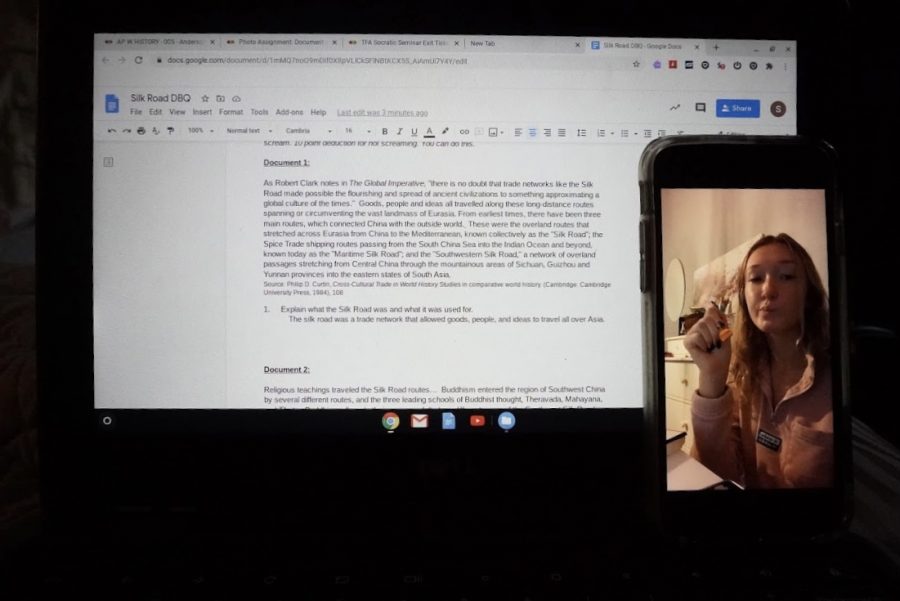
Sophomore Chloe Anderson FaceTimes sophomore Jolie Gabriel to work on an assignment for AP World History. Since everything is online this year, people have lost the social aspect of school. “Interacting with classmates while online has been more difficult because since you are not in class with people, you are limited to people you already knew and already had contact with to ask questions and get help on work,” Anderson said. “You do not have access to all the people in the class like you would be if you are in school,” she added. Many kids have been relying on FaceTime this year for both school work and to talk with their friends.
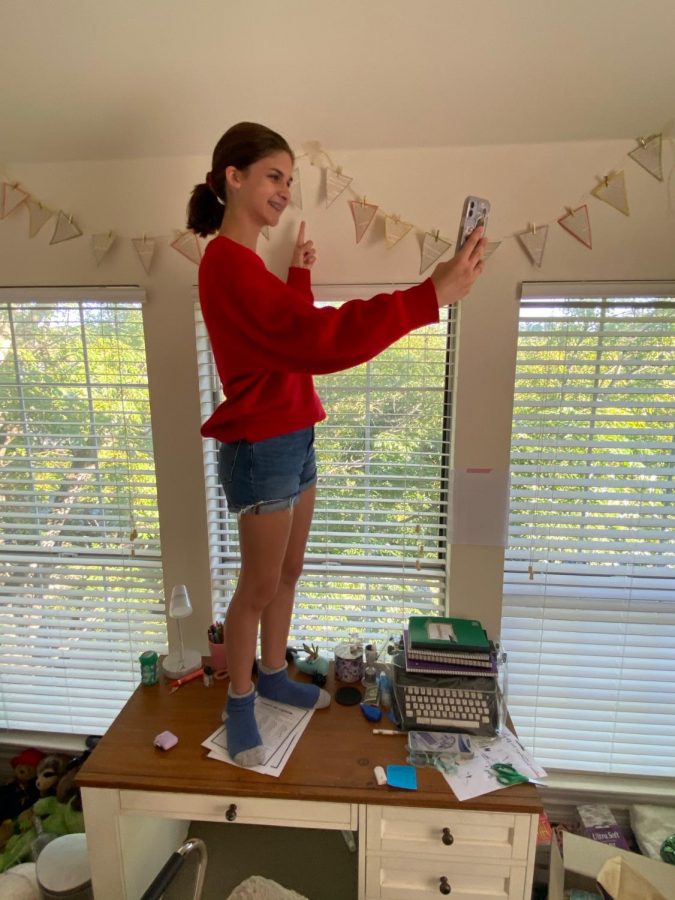
ON TABLETOP OF IT: Balancing on top of her desk, freshman Lanie Sepehri snaps a selfie for her geometry project. For a geometry project, students had to find examples of vocabulary terms around their house. “I have these pendants hanging in my room, which are pages from my favorite book, and I realized they were perfect to represent acute angles, so I was happy I got to include some of my personality in a math project,” Sepehri said.

PASS THE BALL! Most students headed to online math on a Friday morning, wish they weren’t going to virtual school. The only math these reluctant students want to do is to count down the minutes until the weekend. Well, Mr. Pass’s third period pre cal Friday classes the cure for the melancholy math malady. In addition to knowing his subject well, Mr. Pass also loves to juggle. In fact, he just ordered a new set of colored clubs that he showed his pre-cal students on Zoom! In pre-pandemic times, Pass used to host a juggling club during flexible instruction time. Now that school has been reduced to online, he relies on his short Friday classes as an outlet for his creativity. “I like to teach my students one skill on top of math,” Pass said, “so why not teach you how to juggle?” Junior Leila Vaughn said, “It creates a fun environment in class.” Math can often be a hard subject to grasp on to and understand, but it can be a lot more, dare we say it, passable, with small juggling breaks in between. Mr. Pass is finding the positive side of being able to spend more time on your hobbies and sharing them with the world, and he encourages everyone else to do the same. Photo by Risa Darlington-Horta.
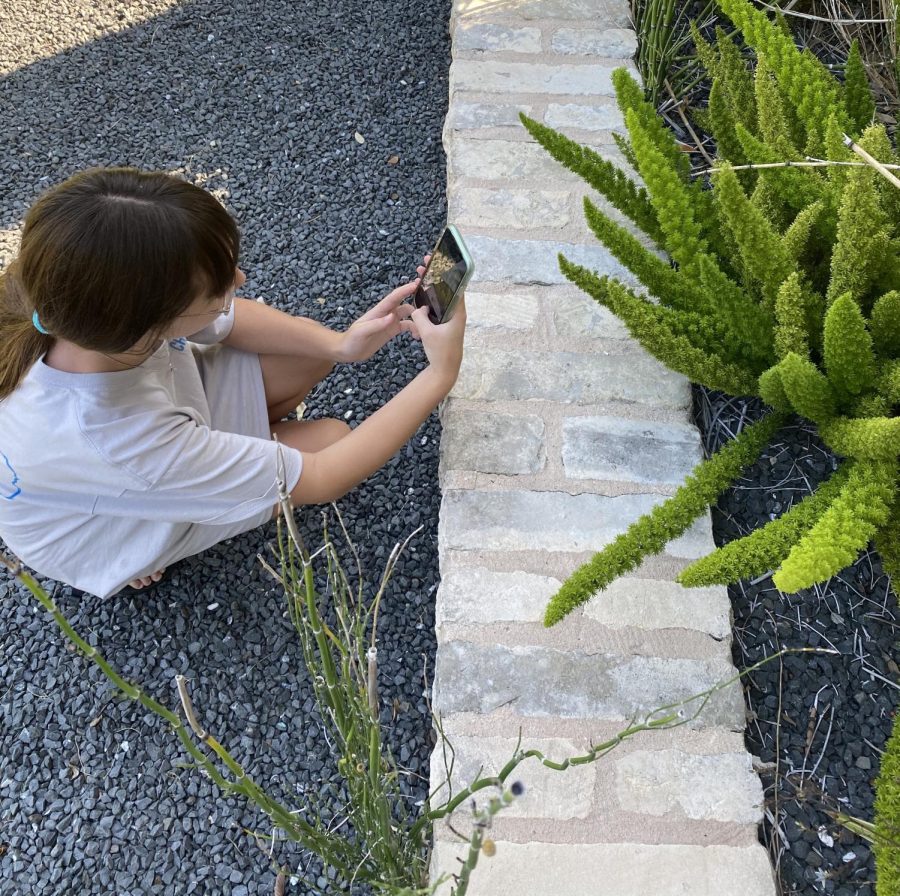
ONLINE SCHOOL IN THE GREAT OUTDOORS! Outside of her house, freshman Francie Wilhelm observes local plant life for a biology assignment. The assignment was to identify some examples of heterotrophs (or plants) and research them. “Going outside for my homework was definitely a nice change,” Francie said. “It was fun to research the nature that’s right in my front yard.”
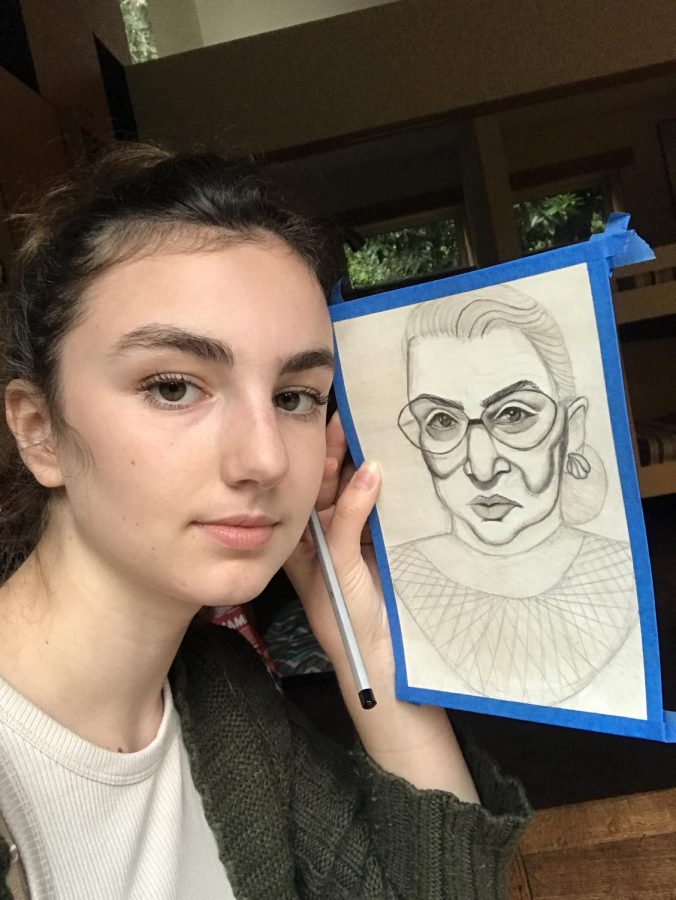
NOTORIOUS: Sophomore Amaya Collier, a visual arts major, draws the recently departed RBG for Ms.O’Keefe’s Drawing 2 class. Her assignment was to create a postage stamp featuring someone who she values and thinks is important. “I chose to draw RBG because she was my personal hero and she was so inspirational,” Collier said of her project. “I’m working hard on it and I’m hoping it will turn out well once it’s finished.”
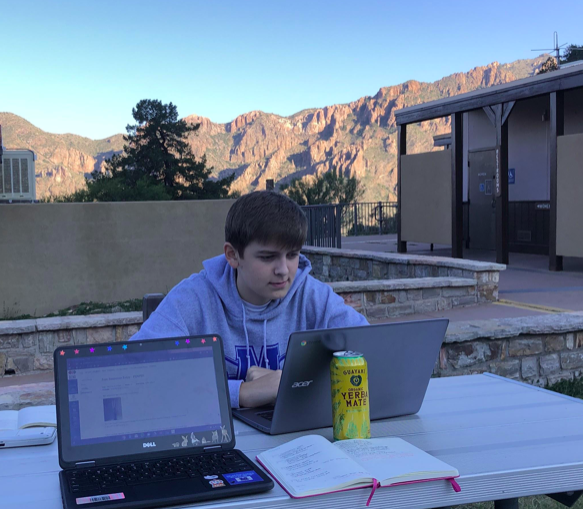
OUTDOOR SCHOOL: Freshman John Dietz does his Spanish work at a visitor center at Big Bend National Park on Friday. Dietz’s family was at the park for the weekend, so they all had to find WiFi to do their work and attend zoom classes. “It was hard to focus with other people walking around,” Dietz said, “but it was really cool to be outside with all the scenery.” Photo by Isabella Dietz.
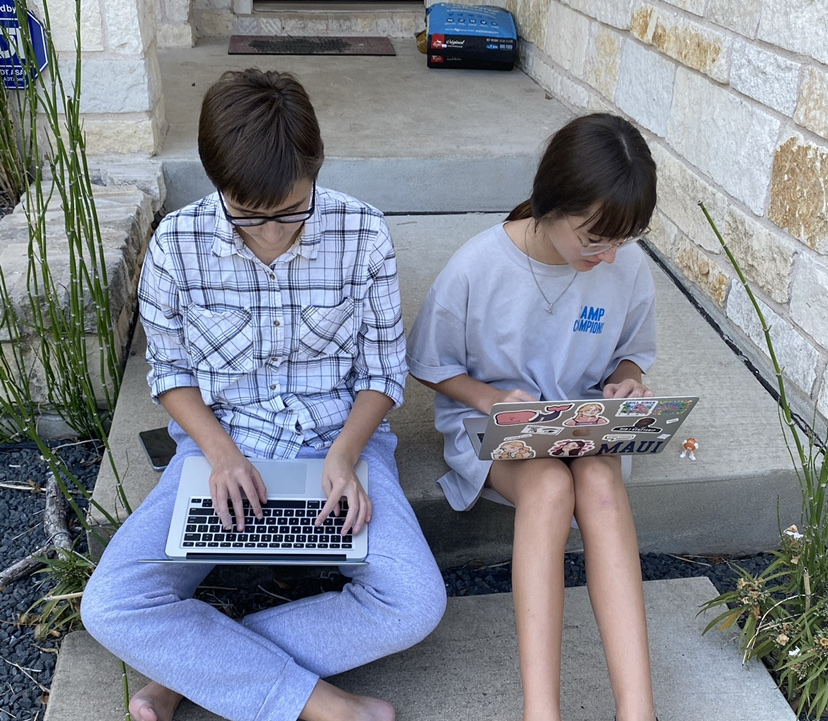
BIOLOGY BUDDIES! Freshmen Lily Hobbs and Francie Wilhelm get together to work on their biology assignment together outside after school.They sat together on Hobbs’ porch and collected data on their surroundings. “It’s always so much fun to get to hang out with my friends, and Lily is so fun to work with,” Wilhelm said.
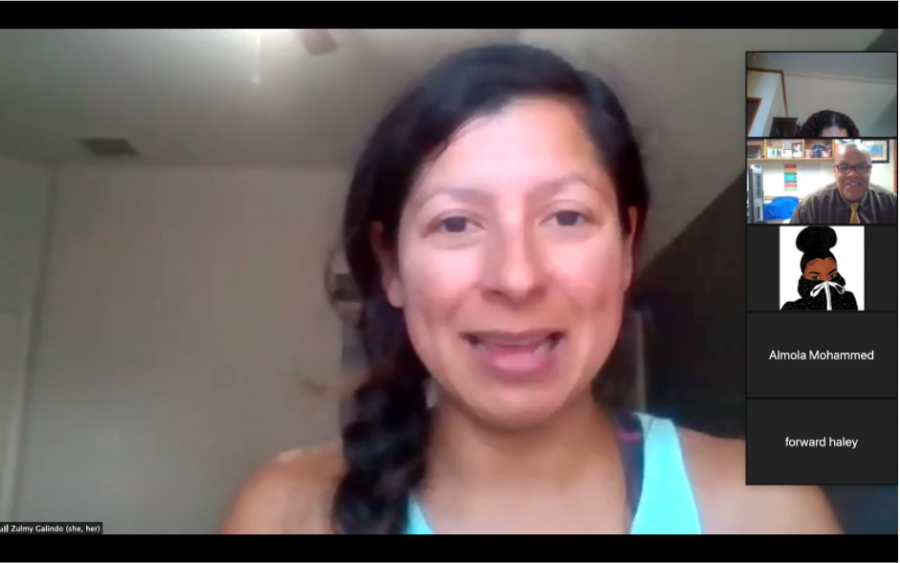
MEDITATION TIME: On Wednesday, assistant principal Larry Featherstone joins the Zoom session for the junior AVID class. At the beginning of class, Zulmy Galindo begins class with a meditation practice as students are getting preparing to write their college essays. “This meditation was really helpful for me,” junior Lisa Alcala said. “I’ve been really stressed overall with my junior year and the workload.” Photo by Frances Arellano.
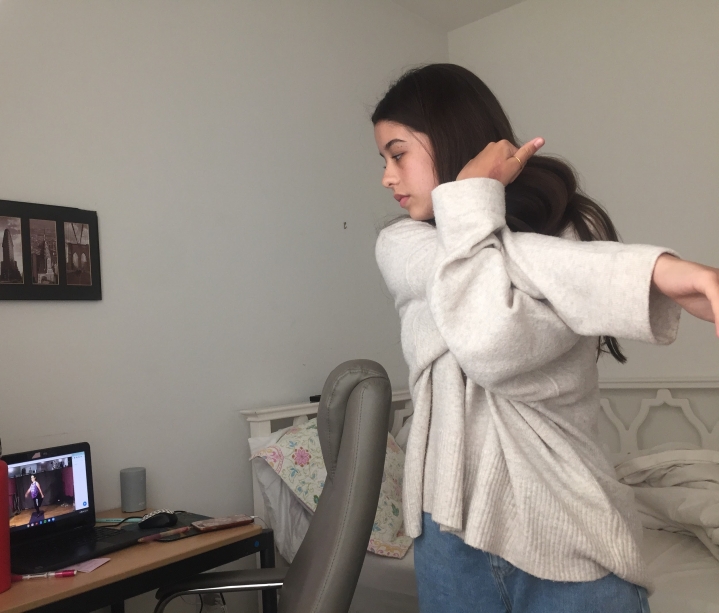
STRETCHING OUT THE STRESS! Freshman Sophi Beardslee stretches out her arms for her dance warm up. “I love stretching!” she shared “It helps get out all my built up stress and emotions. I felt a lot more at peace after I took some time to stretch!” Beardslee said that doing zoom dance classes takes some getting used to. “It’s definitely weird. This is my fourth year doing dance, and I’m used to dancing in a studio but now i have to do it in my room.”

LUNCH BREAK. Juniors Anna Bausman and Reece Tao finish off their morning Zooms and eat lunch together before going off to their own houses for the last two classes of the day. Although these Mac students are not able to be quite as social during lunch as they normally would, they are still able to enjoy their midday break. “Lunch was always my favorite time of the day,” Tao said. “Just being able to hang out with my friends and relax was important to me, and I’m glad I’m still able to have a semblance of that normality.”
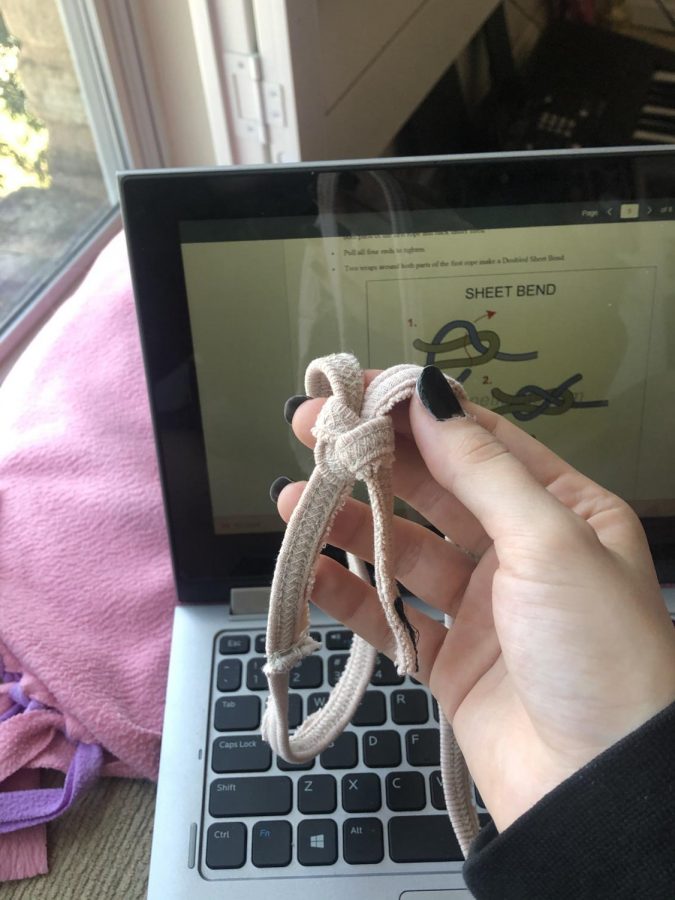
KNOT TODAY: Junior Mollie King demonstrates one of the knots she learned in her eighth-period Tech Theatre II class. “This one is called a sheetbend, and it’s mainly used for tying two pieces of rope together,” King said. Students in the Tech Theatre 2-4 classes have been working on dual projects, floor plans and knots. “Both of our topics are pretty easy,it’s all about repetition and practice in order to get a hang of the computer program and the knot techniques,” King said.
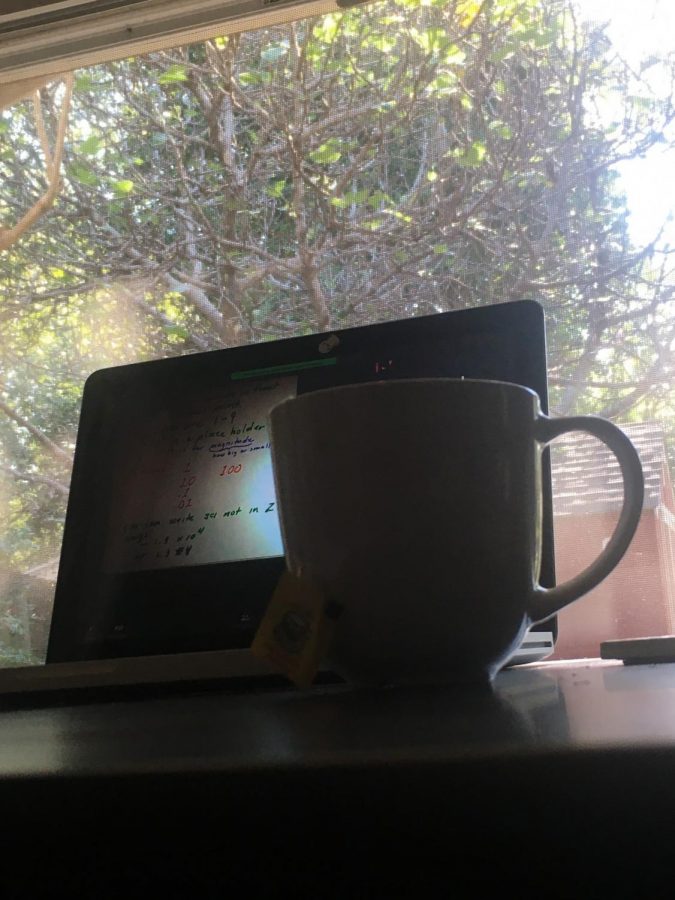
SUITS HIM TO A TEA: Tea is a must have for freshman Jude Masoni. “Waking up to a warm cup of tea to start off my day is a great feeling,” said Masoni, who added that his father being from Kenya is the main reason for his tea addiction.
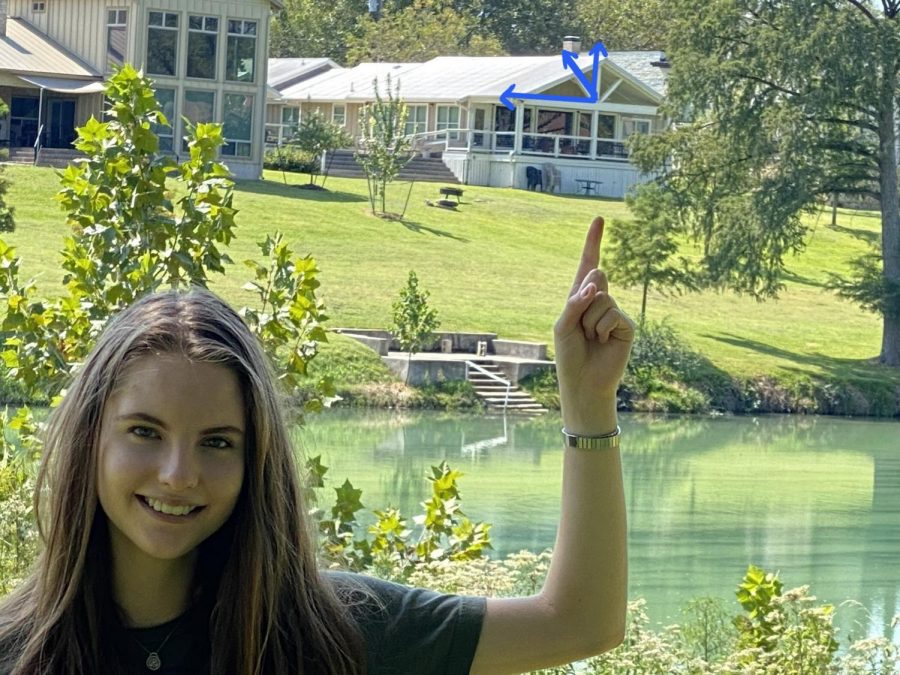
GEOMETRY IS EVERYWHERE! Freshman Ingrid Smith finds a complementary adjacent angle by the Blanco River for a geometry scavenger hunt assignment. ”There really are angles all around you,” Smith said. “After doing this assignment, I see angles everywhere I look!” Smith also mentioned, “It’s fun to go outside for math homework because it’s a nice break from Zoom and my computer screen.”

KANJI ATTITUDE: Freshman McKenzie Martinez practices her new kanji her Japanese teacher gave her. “In Japanese we learn around six to seven to kanji each week. I am always having to study to keep up because there are like thousands of kanji,” Martinez said.

WAITING FOR SCHOOL TO START. Ten-year-old cocker spaniel Jake collects his ball and heads to the couch at 9 a.m. Jake joins Will Myren on the couch as they wait for Zoom school to begin. “Throughout the day I am joined in my corner of the couch by Jake who is almost just out of camera range in every Zoom meeting,” Myren said.

Prior to their first in-person practice on Oct. 5, the drill team was relegated to practicing together over Zoom. Here, junior lieutenant Annabel Winter demonstrates a routine to her squad during a first-period Zoom class on Sept. 30. Junior Blue Brigade member Ava Guerrero said, “It was really difficult to learn dances on Zoom because there was lag and the screen is mirrored, so it’s hard to tell what arm or leg to use, so I was really glad to be back.” Caption by Sarah Crow.



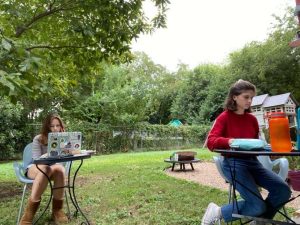
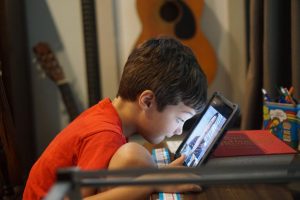
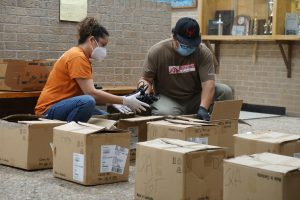
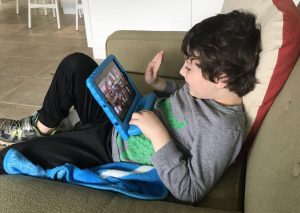
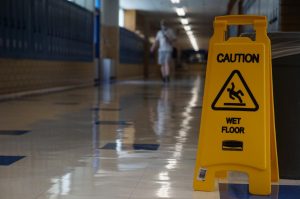
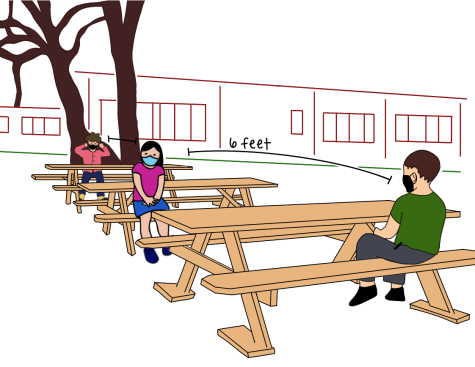
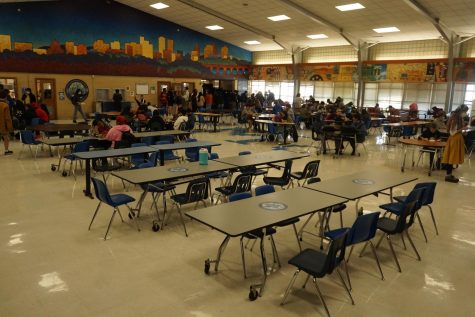
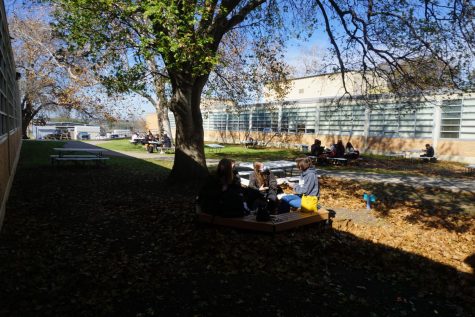
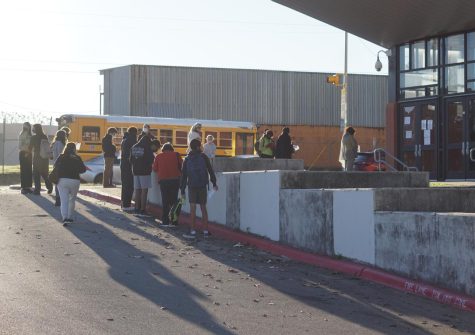


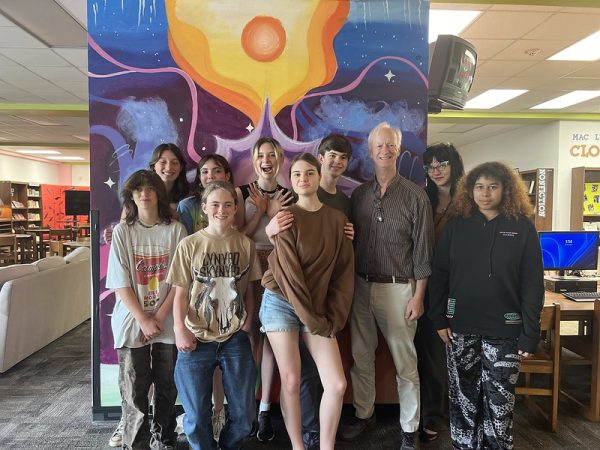
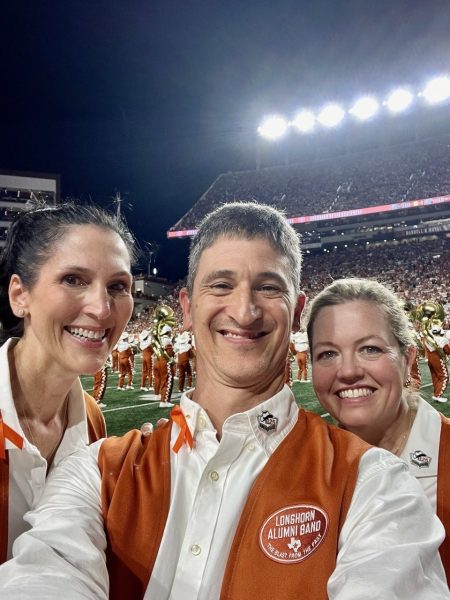

![Senior Sebastian Banks performs a solo and his final chamber guitar concert on May 16 in the MAC. "l’d like to join some kind of music group [at St. Ed’s] because I think that’d be really fun," Banks said of his plans to play guitar while in college. "They don’t have classical guitar specifically, which is what I play, but I’ll just have to see."](https://macshieldonline.com/wp-content/uploads/2024/08/53728055720_aaac0d90f9_o-600x344.jpg)
Logan Kolehmainen • Nov 12, 2020 at 11:45 am
I really like this story because it has a lot of pictures and it was paced really well.